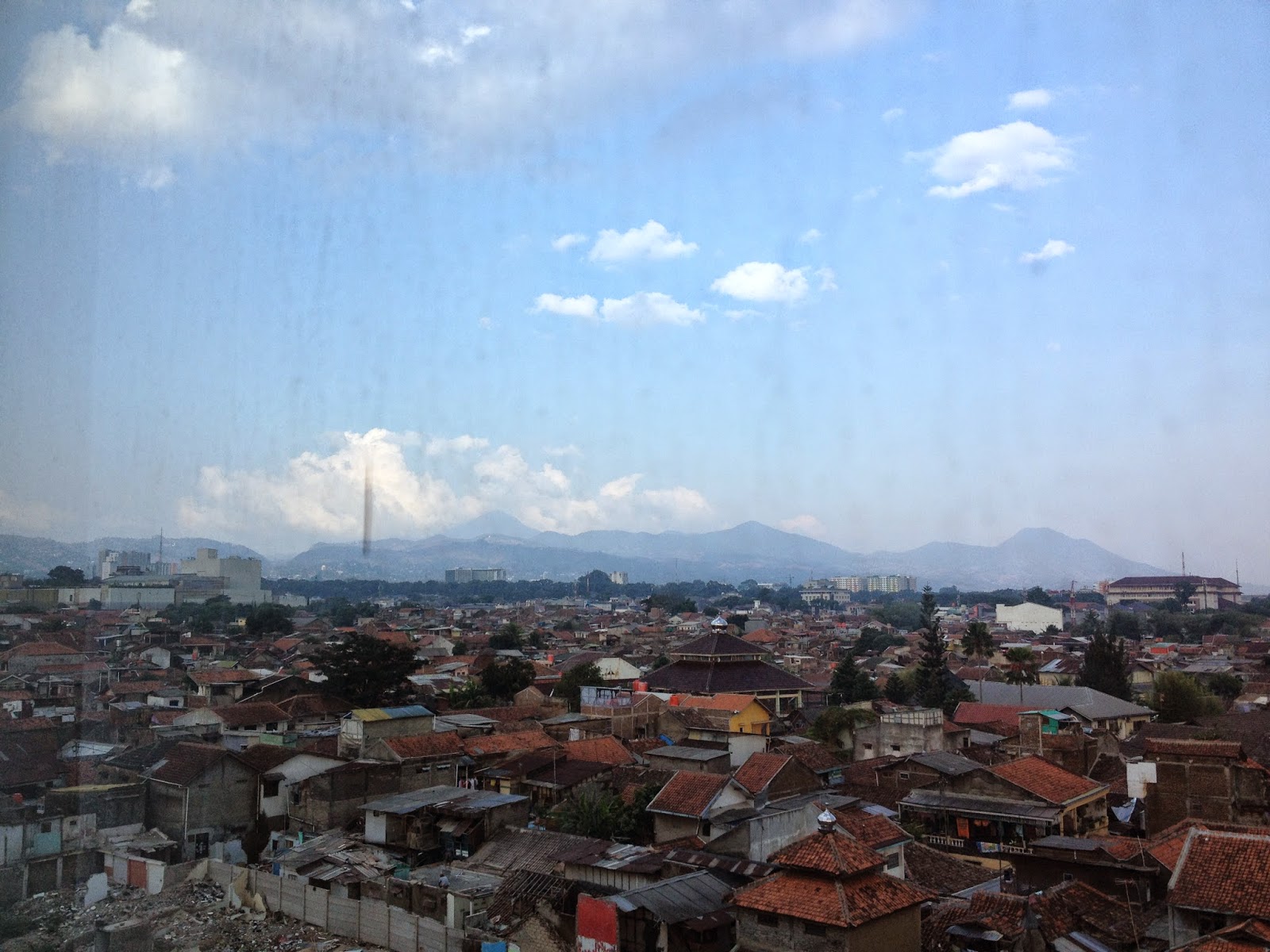Indonesia remains for me one of the most incomprehensible countries. It is the world's fourth most populous nation, trailing only China, India, and the United States, with 250 million people scattered over 18,000 islands and 3,400 miles/5,400 kilometers. To put that in perspective, the Indonesian archipelago stretches 400 miles further than the distance from Boston to Los Angeles, or more than a thousand miles further than the distance from London to Moscow. More than half of this population, 140 million, lives on the island of Java, which is roughly the size of the state of Pennsylvania. It is home to more than 300 ethnic groups and at least as many languages.
In addition to being home to the world's single largest population of Muslims, Indonesia also has significant Christian communities (more than 10% of the population). Both mosques and churches can be seen rising on the skylines of Indonesian cities. Yet the religious character of Indonesia is even more complex than this, as Indonesian/Javanese culture is woven together from a fabric that includes significant Hindu and Buddhist influence from before the coming of Islam and Christianity to the region. This is visible in the great Buddhist temple complex at Borobudur in Central Java, unearthed from the rainforest by the Dutch and English in the nineteenth century, and the South Asia/Hindu-influenced motifs that appear in both Indonesian art and stories. This is a nation of nuance.
It is also a land of considerable tension. The strengthening of Islamic identity in Indonesia in recent decades has led to many more women covering their heads than would have been true in the mid-20th century. By head covering, I do not mean the full facial covering found in some parts of the Arab world, but rather a type of scarf unique to Southeast Asian islam that frames the face, often in brilliant pinks and purple colors.
Modern Indonesia, which became independent from the Netherlands after World War II, is built on the philosophy of pancasila, or "five principles: belief in god (with inherent acknowledgement of religious plurality in the country), belief in just and civilized humanity, belief in the unity of Indonesia, and adherence to democracy and social justice. This idea has played a powerful guiding role in bringing considerable unity to a great and diverse nation. Although pancasila is attacked by a number of Islamic political parties and fundamentalist groups beyond politics, the pancasila center seems to continue to hold.
These are hopeful times in Indonesia. The recent election by large margins of Joko Widodo, known as Jokowi, has given hope that some of the entrenched corruption and powerful interests that have dominated Indonesia in the past can be overcome. Jokowi did not arise from the Jakarta elite, but rather from a poor family in Central Java, before beginning a political career that made him governor of the capital city before assuming the presidency. He faces considerable opposition in parliament and outside of government to his reforms, but the Indonesians I interact with seem to be hopeful about the potential of this new administration.
.jpg) |
| The island of Java at night - in the bottom middle |
 |
| A Balinese temple in Ubud |
 |
| The Indonesian flag with pancasila symbol - "out of man, one" |
 |
| View over Bandung, West Java, with mountains in the background |
No comments:
Post a Comment